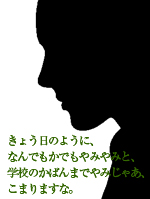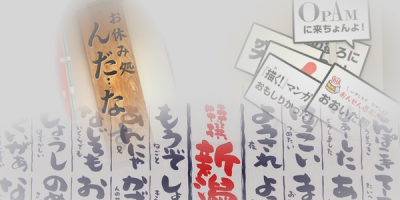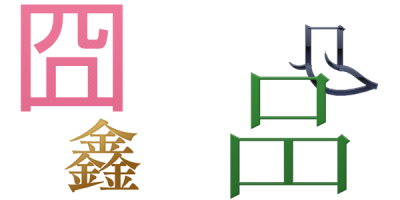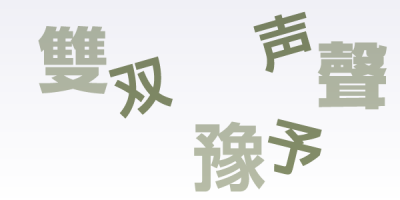In the previous two parts (92 ・ 93), we saw that the younger brother in Natsume Soseki’s Koujin used ..desu ze and …de saa when addressing his older brother. In Sakaguchi Ango’s Furenzoku Satsujin Jiken we saw a famous detective who used …de saa and …masen ze and the maid who said Okusama, ojoosama wa gero haite… (Madam, the young miss puked). The heroine in Tsuboi Sakae’s Nijuushi no Hitomi uses …masu na and her smile is described as “sneering.” Wouldn’t looking at these kinds of unnatural expressions, no matter how authoritative these famous quotes are, muddy the connection between Japanese language and character, and warp their mutual relationship?

That is definitely a possibility. But we needn’t worry about it too much. This is because the problem we are most concerned with is the realm of “modern Japanese,” which, in its own way, we are sufficiently capable of understanding by intuition.
To be sure, the …desu ze, …masen ze, and …de saa of the brother in Koojin and the detective in Furenzoku Satsujin Jiken, and the …masu na in Nijuushi no Hitomi would be unnatural as modern language. However, this is something that we intuitively understand. We needn’t consider these to be examples of modern Japanese. That’s all there is to it.
On the other hand, when the maid in Furenzoku Satsujin Jiken, said Okusama, ojoosama wa gero haite, kurushiminasu tte imasu ga… (Madam, the young miss puked and said she’s in pain), we can sufficiently understand, even from a modern perspective, the obtuseness of her use of refined words, like okusama (madam) and ojoosama (young miss) together with the vulgar gero haite (puke) to be the behavior of a certain type of “country folk” character.
The “sneering” of the heroine in Nijuushi no Hitomi probably also seems normal, even from modern aesthetics, when we consider that it takes place in an opening scene eight years after the previous chapter, and the heroine is being introduced not as a heroine, but as an unidentified woman.
Thus, we cannot dismiss “the young miss puked” or the “sneering” as artifacts of the olden days that do not apply in modern times. We should recognize them as modern Japanese, but as examples of twists on speakers and scene.
These are simple examples because they are things that we understand intuitively. In cases where it is best to use intuition, there is no reason not to.
Unfortunately, our understanding is extremely limited when it comes to the root problem of linguistic communication —that is, the problem of what we are doing with language when we get together in groups. It is still very difficult for us to know even what position a given behavior occupies in the world of linguistic communication at large. Even if we try to find its position, we cannot even plot its longitude and latitude, as we haven’t yet discovered where the poles are on the globe of linguistic communication nor the equator. This is the extent to which we do not understand the world of linguistic communication.
The fact that our understanding of it is so limited indicates that what we call meaning within this world is something created by the people living in it, and not something that can be measured objectively from the “outside.” If we try to observe something in a straightforward manner, this tends to eliminate intuition. However, uniquely in the case of our own linguistic communication, intuition is a crucial tool, apart from objective measurement, when making observations.
In backing up my assertion that the concept of character is necessary in observing the Japanese-speaking community, I have not produced any byzantine formulae or graphs. Rather, I think it is best to use fragments of noted literary works, because these will give readers an intuitive understanding of character.
And also, I admit, because I like such literary works.







